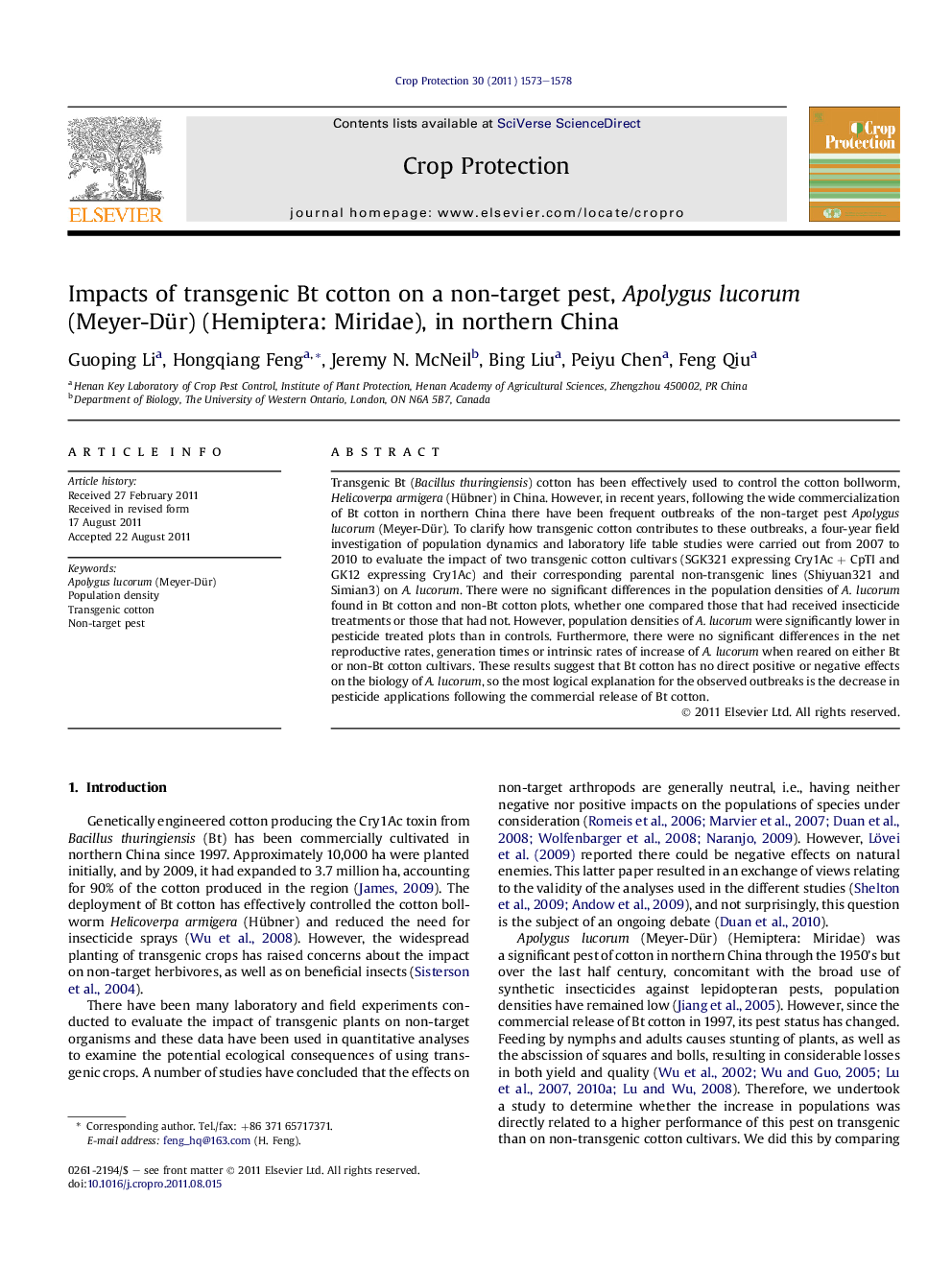| Article ID | Journal | Published Year | Pages | File Type |
|---|---|---|---|---|
| 4506543 | Crop Protection | 2011 | 6 Pages |
Transgenic Bt (Bacillus thuringiensis) cotton has been effectively used to control the cotton bollworm, Helicoverpa armigera (Hübner) in China. However, in recent years, following the wide commercialization of Bt cotton in northern China there have been frequent outbreaks of the non-target pest Apolygus lucorum (Meyer-Dür). To clarify how transgenic cotton contributes to these outbreaks, a four-year field investigation of population dynamics and laboratory life table studies were carried out from 2007 to 2010 to evaluate the impact of two transgenic cotton cultivars (SGK321 expressing Cry1Ac + CpTI and GK12 expressing Cry1Ac) and their corresponding parental non-transgenic lines (Shiyuan321 and Simian3) on A. lucorum. There were no significant differences in the population densities of A. lucorum found in Bt cotton and non-Bt cotton plots, whether one compared those that had received insecticide treatments or those that had not. However, population densities of A. lucorum were significantly lower in pesticide treated plots than in controls. Furthermore, there were no significant differences in the net reproductive rates, generation times or intrinsic rates of increase of A. lucorum when reared on either Bt or non-Bt cotton cultivars. These results suggest that Bt cotton has no direct positive or negative effects on the biology of A. lucorum, so the most logical explanation for the observed outbreaks is the decrease in pesticide applications following the commercial release of Bt cotton.
► A. lucorum has become a severe pest after planting of Bt cotton in northern China. ► We evaluated the impacts of transgenic cotton and non-transgenic lines on A. lucorum. ► Bt cotton had no direct positive or negative effects on the biology of A. lucorum. ► Pesticide significantly controlled A. lucorum on both Bt and non-Bt cotton. ► Outbreaks of A. lucorum can be attributed to decrease of pesticide applications.
